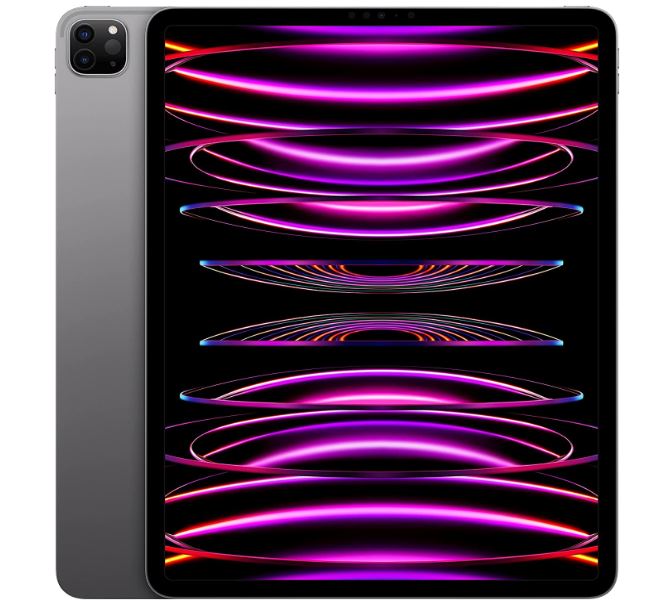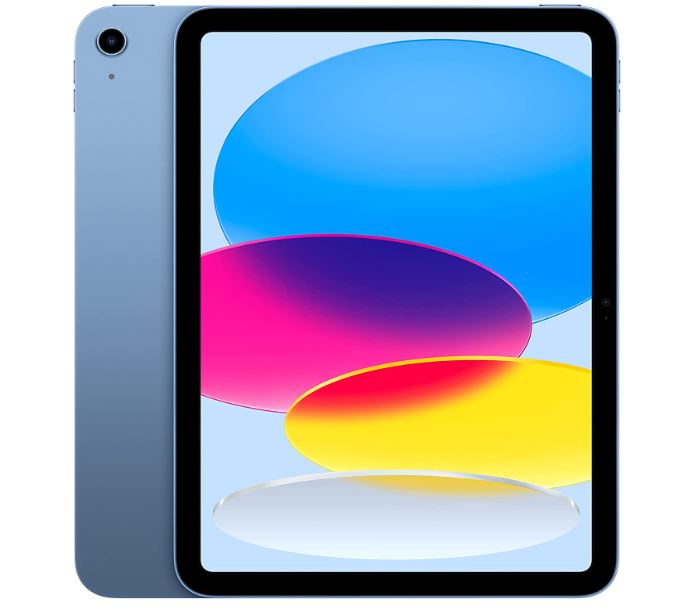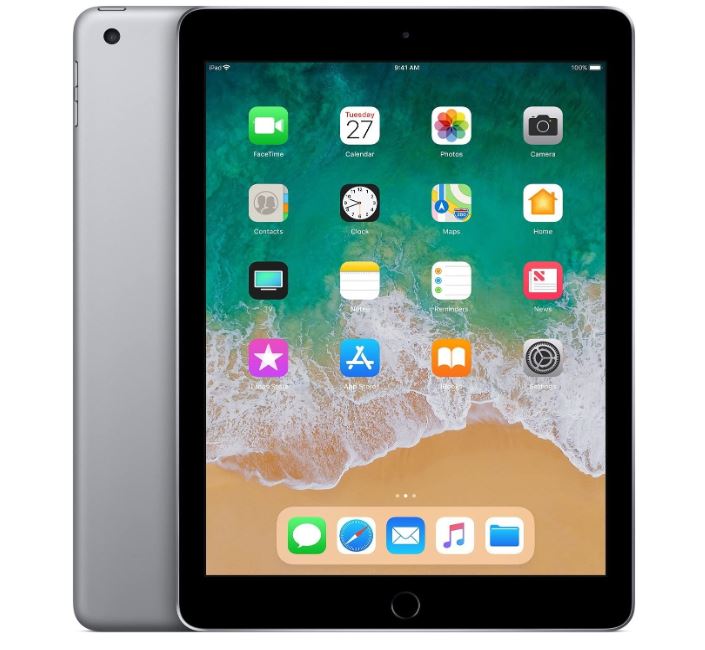The best iPad for pilots and aviation is the one that comes with a high-quality display, a fast navigation system, and a longer battery life. The latest models of Apple iPad are equipped with some of the most advanced features that every pilot wants right in their cockpit.
Things to Consider When Buying iPad for Pilots or Aviation Use
Compatible Operating System
The current operating system of the iPad should easily sync with the aviation app or program. Some flight applications are not compatible with the older version of iOS.
Long Battery Life
Make sure you choose an iPad that comes with a longer battery life for longer flights. Generally, older models of Apple iPad come with a limited battery capacity and cannot last long if you fly for long hours.
Anti-Glare Screen
Newer versions of the Apple iPad come with an anti-glare screen that offers better viewing angles to easily view navigation charts and other flight-related data. This feature also helps in viewing the details on an iPad in brighter light conditions.
Storage Capacity
As a pilot, make sure you go with an iPad that comes with a large storage capacity. Sometimes, you’ll need to store large files and flight plans that may consume a lot of space.
Navigation
Although every iPad model comes with a navigation feature. However, the navigation on the latest iPad models is more accurate and faster as compared to the older models. Apple iPads use the Apple Maps app for navigation. It provides turn-by-turn spoken directions and 3D views.
Display
Focus on the iPad that comes with a brighter display, this allows you to easily read any notifications or documents in any lighting condition throughout the flight.
Why is an iPad Used in the Cockpit?
An iPad is used in the cockpit to provide real-time information and situational awareness to the pilot. Its portability and large display make it particularly useful for pilots to access digital aeronautical charts, aircraft performance data, weather reports, and other critical data. iPads also provide pilots with a convenient way to access checklists, flight plans, and logbooks.
List of the Best iPads for Pilots and Aviation Use
Here are the top options to consider:
1. Apple iPad Pro 12.9 Inches – Overall Best Pick
If you have the Apple iPad Pro at your side, there is no better iPad option for aircraft. This is best suited for experienced private and commercial pilots and has enough firepower to easily last you a few years.
Additionally, the current model has far more processing capability than the earlier model to support multitasking.
Why is it appropriate for use in aviation?
The 12-inch liquid retina display of the iPad Pro is designed for cockpits with plenty of elbow room. The vivid screen is simple to view and even has precise viewing angles. Regarding the resolution, you may count on 2732 x 2048 pixels, which improves the visual experience overall.
And to top it all off, this iPad has glass that resists scratches. Another good argument to utilize an iPad in the cockpit is its design.
First off, the device’s 11.04 x 8.46 x 0.25-inch size and modest 1.5 pounds (682 grams) weight increase its portability.
Additionally, this model has Wi-Fi 6, 5G, and cellular connectivity, enabling you to use the GPS capability that is included.
Battery and Charging
This iPad model has a big battery module with a 10-hour continuous runtime.
In addition, if you don’t mind spending more money on the 18W charger, Apple offers support for rapid charging when it comes to charging while on the go.
Technical Details
The top-of-the-line M2 chipset is at the heart of the 12.9-inch iPad Pro.
Additionally, you have access to 8GB of RAM, which enables you to switch between tasks, weather updates, and charts.
The 256GB module appears to have enough storage space for technical information including instrumental procedures, airport diagrams, and route plans.
Regarding performance, the current hardware configuration is excellent with the majority of pilot-relevant programs, such as CloudAhoy, ForeFlight, and others.
Summary
Overall, the iPad Pro is quite capable of helping professional pilots in their work.
Even if the specifications sheet itself is self-explanatory, it is the superior hardware setup and stylish design that set it apart from the other products on the list.
Moreover, the Apple iPad Pro is a dependable investment if you intend to pilot a Boeing or a large Airbus with a larger cockpit.
The larger screen makes it easier to examine charts and routes even if the majority of the relevant functions are comparable to those of the iPad Pro.
iPad Pro include a strong battery, a bright and responsive screen, cellular connectivity, an accurate GPS tracker, and a portable device.
Pros:
- Powerful battery
- Bright and responsive screen
- Cellular connectivity
- Accurate GPS tracker
- Portable
Cons:
- Pricey
2. Apple iPad 10.9-inch – Best Value Tablet for Aviation
One of the few small tablets available is the Apple iPad 10.9, especially if you intend to use it within a tight space like the cockpit.
The enormous storage capacity of this iPad makes it a wonderful choice even for professionals and commercial pilots. Additionally, the 10th-generation iPad outperforms earlier models in terms of multitasking and smoothly executing pertinent programs.
Why is it appropriate for use in aviation?
The 10.9-inch screen is nearly ideal for usage in the cockpit.
This iPad provides exceptional viewing angles and more apparent graphics thanks to its combined total resolution of 2360 x 1640 pixels and a peak brightness of 500 nits.
In terms of appearance and size, this device is sufficiently elegant at 9.75 x 7.03 x 0.24 inches. Even the form factor’s modest weight of 1.01 pounds reflects how thin it is.
This model includes 3G cellular connectivity in addition to Wi-Fi 6 standard for connecting to high-speed wireless internet and GPS functionality for tracking flight paths.
Battery and Charging
Unless you intend to buy a separate fast charger, the current battery isn’t designed for fast charging.
However, you can easily obtain up to 10 hours of backup on a single charge, which is more than enough for several excursions.
Technical Information
This tablet has an A14 Bionic chipset that works with 4GB of RAM. As a result, running programs like ForeFlight is made considerably easier by the current processing configuration.
You may save VFR sectionals and A/FD datasheets with ease with 256GB of storage capacity. Finally, yet importantly, you can utilize the iPad to enable mapping features if ForeFlight and GPS support are both installed.
Summary
The iPad 10.9, which excels in portability and slimness of form, is one of the more promising devices now accessible for pilots.
Pros:
- Fast processor
- Massive storage module
- Bright display
- Scratch-resistant screen
- GPS support
Cons:
- Missing a 3.5mm jack
- Doesn’t support fast charging
3. Apple iPad 6th Generation – Affordable Option
The new and enhanced Apple iPad 6th Gen cannot be compromised in terms of functionality by students and mid-level professionals flying smaller planes.
Additionally, when compared to the earlier iPad model, it has a brighter screen and a better processing system.
Why is it appropriate for use in aviation?
The 9.7-inch panel is the first visible thing. The compact screen is ideal for tiny cockpits with constrained space.
Additionally, the 2048 x 1536 fixed overall resolution offers sharper images. Due to the iPad’s compact size and reasonable weight of 1.03 pounds, the design aspects are almost ideal for smaller cockpits.
The iPad’s dimensions are 6.67 x 0.3 x 9.45 inches. Moreover, this iPad has GPS capability and the Wireless AX standard for creating speedier internet connections.
Battery and Charging
The 9.7-inch iPad has a rather potent battery that can run for 10 hours on a single charge.
Additionally, the iPad doesn’t come with fast charging capabilities out of the box.
However, an 18W charger can fill it up in just 90 minutes, which can be very helpful for pilots constantly pressed for time.
Technical Details
The Apple A10 Fusion SoC and M10 Coprocessor processors are standard on this iPad.
It has 128GB of lightning-fast storage space are operating in tandem with the same.
Moreover, the iPad performs admirably when it comes to running the most important applications, such as Air Navigation and AeroWeather Pro.
Summary
Overall, the iPad 9.7 is one of the finest tablets to purchase if you prefer smaller iPads with powerful processors.
If you like making comparisons, it can outperform other performers on the list due to its low cost.
Pros:
- A10 Fusion chip
- Apple Pencil-compatible
- Medium screen size
Cons:
- No Face ID
- Bad night-time camera quality
4. Apple iPad Air 2 – A Cheaper Aviation iPad
The Apple iPad is a good option for students who want to be pilots and are searching for inexpensive tablets.
Additionally, it has an aesthetically pleasing form factor and screen space that meets all user needs. Thanks to more storage and a faster processor, this version sounds like a fantastic update.
Why is it appropriate for use in aviation?
The 9.7-inch Retina display on this iPad is sufficiently bright and even has a scratch-resistant surface to withstand hard handling.
Apple provides a resolution of 2048×1536 pixels, which is sufficient for displaying the best airport and flight route diagrams.
This iPad is slightly thicker than the other iPads on the list in terms of aesthetics, measuring 12.25 x 2.5 x 10.25 inches.
Additionally, this item has a weight of 1.05 pounds and a variety of connectivity-specific features like GPS support, LTE capability, and Wireless AC standard.
Battery and Charging
Apple introduces a non-removable battery pack that can provide 10 hours of additional backup time under moderate usage.
Technical Details
Powering each of the several pertinent processes is an M8 Motion Coprocessor, which is a part of the A8X Chip with 64-bit Architecture.
Additionally, the 2GB RAM complements the same by enhancing the ForeFlight application’s performance.
The 32GB storage space that follows is more than sufficient for students who want to stack in instructional content, demo charts, and other resources without having to work too hard.
Pros:
- Beautiful, thin aluminium design
- Touch ID included
- Terrific display
- Fast processor
- Anti-reflection screen coating
Cons:
- Minor upgrade from iPad Air
Cellular or Wi-Fi Model
Having a GPA receiver is essential because using an iPad with an inflight GPS is common. Sadly, the iPad frequently lacks Wi-Fi and a GPS receiver.
You now have a choice between two things. If you want an iPad without an external GPS, you can get one with either built-in GPS or you may need to spend money on a GPS module.
It is not worthwhile to own an iPad without a GPS receiver.
Because you cannot change attendance, and charts, monitor the weather, or access NOTAMS when you are inside the cockpit or on the tarmac.
Naturally, there is no Wi-Fi on the aircraft. Additionally, the iPad’s GPS module is necessary for all of our online needs.
Pilots must utilize ForeFlight to navigate and track air traffic while they are in the air.
Additionally, the iPad pilot news app is utilized to get the latest news that matters to pilots while they are in the air.
Overall, a GPS and Wi-Fi-equipped iPad is suitable for pilots.
What is an ADS-B Receiver?
The most recent technique is Automatic Dependent Surveillance-Broadcast (ADS-B). It is used to facilitate midflight by providing surveillance.
It uses satellite navigation to track and report the location or position of an aircraft. ADS-B receiver is frequently used in conjunction with iPad apps like ForeFlight or Garmin.
Storage Size
Depending on the type of work you do, you might need to get an iPad with adequate storage. There are several choices, including 64GB and 265 GB.
Many pilots want specific items to be kept on their iPads at all times. Like:
- Terms & Conditions of the Company
- Guides, charts, and navigational apps
- Selected software for the company
- Applications for news and weather forecasts
- Some PDF files
- Books in PDF
A 64GB iPad may not have enough storage space in most cases. However, it might be a good tablet for you if you travel mostly shorter distances.
An iPad with sufficient and expandable storage space is the best option. You might use your iPad as an accessible gadget as it is always with you.
iPad’s Size
Generally speaking, a good-sized tablet is plenty for the pilot. The ideal size falls between 10 and 12 inches.
The size of the iPad changes naturally as the display size does. Some pilots feel at ease utilizing larger screens between 10 and 16 inches. The space that is available in the cockpit also plays a role in this decision.
The cockpits of all current Boeing models are smart and uncluttered. The large screen won’t be in the way in that scenario.
Smaller screens are preferred when the pilot is operating a small plane because there isn’t much room for them.
Knowing what kind of aircraft you will be flying the most is therefore essential. The information will also be useful in deciding what size iPad to bring on the next trip.
Final Verdict
You cannot dismiss the advantages provided by an iPad if you are a professional pilot flying both private and commercial aircraft and a student hoping to break into the aviation industry.
Even if each new iPad is useful enough, these are some of the most obvious choices. There isn’t a better device than the 12.9-inch iPad Pro if you want to use your tablet to its full operating capabilities and run every professional app in the open.
The iPad 10.9 appears to be the ideal choice to invest in if you are a student looking for a cheaper, roomy iPad with adequate storage space.
Other than these choices, you can get any other iPad as long as it fits your needs in terms of price and app compatibility.





